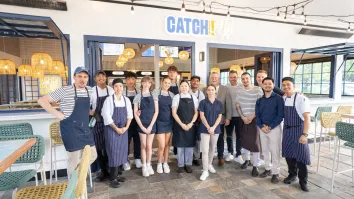Here's how you can truly understand your customer
By Michel van AaltenOne of the key revenue drivers for QSRs is repeat business. Don’t get me wrong. Attracting new customers is important for growing your business, but the benefits of retaining customers cannot be ignored. Many studies have shown just how much value repeat business brings. A Bain & Co. study unveiled that a 5% increase in customer retention can up a company’s profitability by 125%.
Also, as customer loyalty champion Chip Bell puts it, “loyal customers, they don’t just come back, they don’t simply recommend you, they insist that their friends do business with you.” Your repeat customers are your best advocates to bring in new business.
Yet, keeping up with the customer alone hasn’t been easy for QSRs as the F&B landscape evolves and customer demands continue to shift – so how can you make sure diners come back hungry for more?
The new F&B landscape
Firstly, it’s key to acknowledge changes within the F&B industry over the last few years especially the ones accelerated by the pandemic. From a traditionally in-store experience, dining has become an increasingly digital experience that spans several touch points including the mobile app and in-store kiosk.
Fulfilment has also evolved. It’s no longer just counter collection or delivery. Buy-online-collect-in-store is just an example of fulfilment methods that have been added to the mix. As you can see, serving up delicious food is not enough; For starters, you’ll have to think of where diners choose to place an order and how they want to pay for it.
But which touch points should you look at, where can you improve or change to deliver amazing experiences your customers are going to be talking about?
Be your own customer for a day
Just for a moment, I’d like you to put aside what you know about online, in-store or in-app touch points, and join me on the following interactive customer journey we’ve created based on insights from research agency CEBR, data from the Adyen payments platform and our study surveying 23,174 consumers worldwide.
Because to cater to your customers’ needs, it’s best to step into their shoes and see things from their perspectives. Knowing how your customers shop, dine and pay helps us see what makes them shop with certain brands, why they prefer shopping online or in-store, why they choose one payment method over another, etc. It’s the one thing that lets us truly understand our customers.
Making things even more convenient for your customers
You may have noticed, as you go through the interactive journey, how many choices consumers make are based on convenience.
- 55% of customers will visit stores that they know have no queues or make it easy for them to pay.
- 60% want loyalty programmes to be automatically linked to their payment card.
- 73% say the ease of experience is as important as the product quality when they buy online.
Now, more than ever, QSRs need to consider using technology to make things even more convenient. As an example, one in five are keen to see restaurants use technologies such as pay-at-table or self-service checkouts/kiosks to improve their experience without having to get in contact with anyone at the store. Many consumers have also gotten used to buying online, and will shop more online from now onwards, even as shops and restaurants reopen.
As a QSR brand, your challenge will lie in offering the best customer experience on all fronts through unified commerce. That’s where a payment service provider like Adyen can help. Forget about choosing between online or in-store. Adyen’s payments platform lets you take payments online, in-store and in-app – adding payment methods as and when your business requires. This is vital given the ever-evolving payment needs of customers especially in a post-pandemic world where contactless and wallet payments are quickly gaining popularity.
Having all your payments on one single platform gives you full data insight into all transactions and your overall business, helping you make better business decisions in the short and long term. Connecting transactions across all channels also means you’ll have a deeper understanding into your customer needs and behaviours.
And that’s good news for your customers too, because no matter where they buy from, all their purchases can now count towards their next reward on your loyalty programme.
Get in touch with the Adyen team to learn how you can address evolving customer needs and offer the best experience possible across all touch points with unified commerce.

























